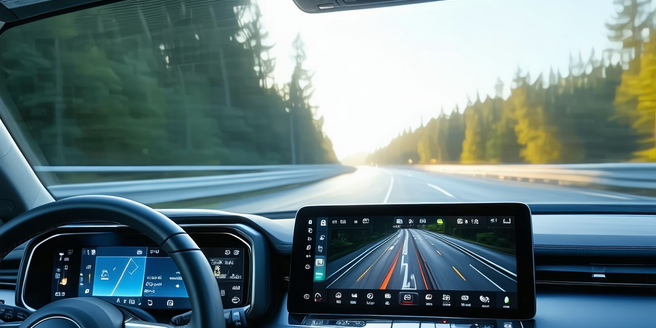Automotive Connectivity Features

Understanding the Basics of Automotive Connectivity
Automotive connectivity refers to the integration of internet and wireless technologies in vehicles, enabling seamless communication between the car, its occupants, the external infrastructure, and other vehicles. This innovative technology enhances the driving experience by providing real-time data on traffic, navigation, and road safety. It allows vehicles to connect to smartphones, tablets, and computer systems for entertainment and assistance. As technology evolves rapidly, staying updated with the latest advancements is essential. Essential components include telematics systems, in-car Wi-Fi, and cloud-based services. Connectivity systems operate via various protocols like Bluetooth, Wi-Fi, and cellular networks, ensuring that drivers and passengers remain connected on the go. As automakers develop more advanced systems, understanding these basics is crucial for making informed decisions about vehicle purchases.
Benefits of Connected Cars for Drivers
Connected cars offer numerous benefits that enhance driver convenience and safety. Real-time traffic updates help in navigating efficiently, reducing commute times and fuel consumption. Voice-activated controls and infotainment systems minimize distractions, allowing drivers to focus on the road. Safety features, such as automatic emergency response and driver assistance, provide peace of mind. Furthermore, connected vehicles are paving the way for advancements in autonomous driving technology. Additionally, over-the-air updates ensure that vehicle software remains current without the need for a dealership visit. Connected cars also enable remote diagnostics and alerts, minimizing maintenance surprises. Integration with smartphones allows for seamless access to music, contacts, and navigation, creating a connected lifestyle. These advancements make driving more comfortable, efficient, and enjoyable.
Top Connectivity Features to Look For
When evaluating vehicles for their connectivity features, key aspects to consider include in-car Wi-Fi, Bluetooth, and smartphone integration through platforms like Apple CarPlay and Android Auto. These systems facilitate hands-free communication, music streaming, and app access. It’s important to remember that seamless connectivity can significantly enhance the overall driving experience. Navigation systems with real-time traffic updates and live road conditions are essential for efficient driving. Advanced safety systems, such as lane-keeping assistance, adaptive cruise control, and automatic emergency braking, are vital for enhancing vehicle safety. Remote starting, climate control, and vehicle tracking offer convenience and peace of mind. Over-the-air updates ensure that navigation maps and software remain updated. To make the best choice, prioritize features that align with your needs.
Challenges Facing Automotive Connectivity
The transition to connected vehicles presents several challenges, including data privacy and security concerns. As vehicles rely more on data transmission, they become susceptible to cyberattacks that could compromise safety and privacy. Ensuring data protection through robust cybersecurity measures is crucial. The integration of multiple technologies and platforms poses interoperability challenges. Manufacturers must ensure seamless communication between different systems. Furthermore, advancements in 5G technology are expected to enhance connectivity and improve coverage. Additionally, network coverage is not uniformly available in all areas, limiting connectivity in remote regions. An over-reliance on technology may distract drivers if not properly managed. Addressing these challenges requires collaboration among automakers, tech companies, and regulatory bodies to create standardized, secure, and reliable connectivity solutions.
The Future of Connectivity in Auto Industry
The future of automotive connectivity is marked by increased automation, with autonomous vehicles on the horizon. Self-driving cars will rely heavily on advanced connectivity systems for real-time data exchange, decision-making, and navigation. As these technologies evolve, consumer trust and regulatory frameworks will play critical roles in their widespread adoption. Developments in 5G technology will enhance data speed and reliability, refining vehicle-to-everything (V2X) communication. Artificial intelligence and machine learning will drive personalized in-car experiences and optimized vehicle performance. Eco-friendly technologies will interact with connected systems to encourage sustainable driving habits and reduce emissions. Furthermore, vehicle-to-infrastructure (V2I) communication will facilitate smart city integration, enhancing urban mobility and environmental efficiency. As technology advances, connected vehicles will offer unprecedented convenience, safety, and efficiency, reshaping the automotive landscape.